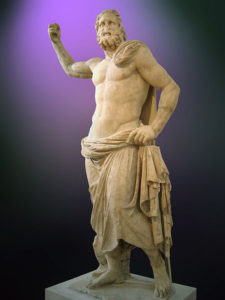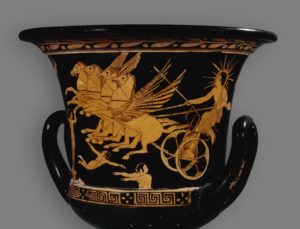[6] τὸ δὲ οὐ Κορινθίοις μόνον περὶ τῆς χώρας ἐστὶν εἰρημένον, ἀλλὰ ἐμοὶ δοκεῖν Ἀθηναῖοι πρῶτοι περὶ τῆς Ἀττικῆς ἐσεμνολόγησαν: λέγουσι δὲ καὶ οἱ Κορίνθιοι Ποσειδῶνα ἐλθεῖν Ἡλίῳ περὶ τῆς γῆς ἐς ἀμφισβήτησιν, Βριάρεων δὲ διαλλακτὴν γενέσθαι σφίσιν, ἰσθμὸν μὲν καὶ ὅσα ταύτῃ δικάσαντα εἶναι Ποσειδῶνος, τὴν δὲ ἄκραν Ἡλίῳ δόντα τὴν ὑπὲρ τῆς πόλεως. ἀπὸ μὲν τούτου λέγουσιν εἶναι τὸν ἰσθμὸν Ποσειδῶνος:
- Map
- Pre Reading
- Post Reading
- Culture Essay
N/A
Why would Poseidon and Helios both think they have a claim on the Corinthia? As you read further in Pausanias, notice where these gods reappear.
Quiz Bowl: The Road to Isthmia is full of stories about evil-doers, good deeds, transgressions, and arguments. Write 7-8 questions in Greek about the episodes recounted in Pausanias 2.1.3-6. Be sure that you are ready with the answer to each question.

